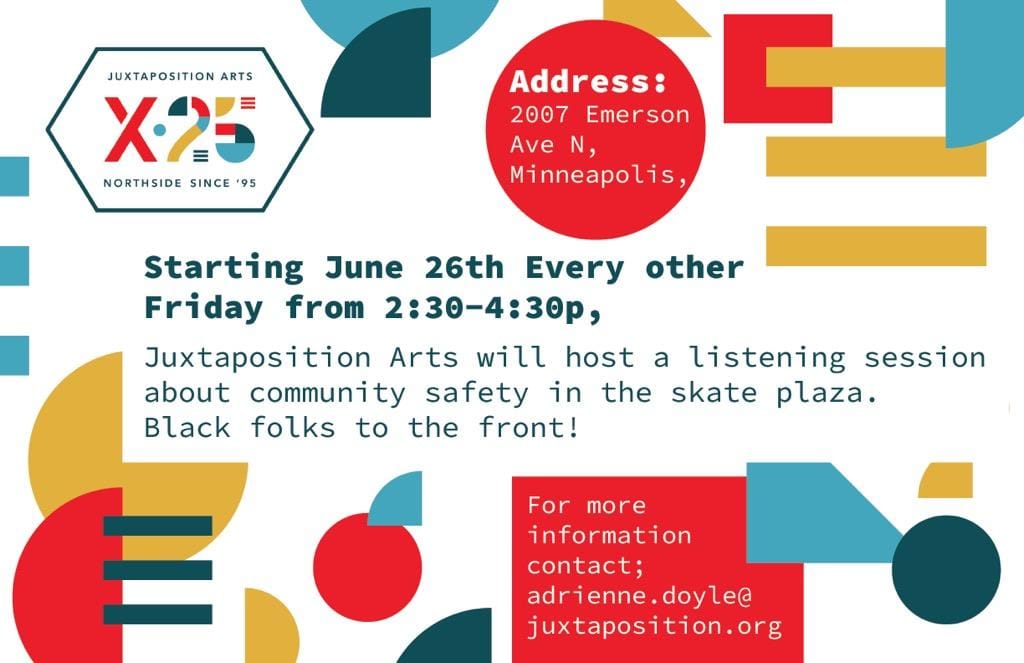Minneapolis Uprising
Testimony and Timeline, May 25th -July 9, 2020
July 9, 2020
The Uprising that followed the murder of George Floyd by Minneapolis Police officers, began in Minneapolis and spread around the world. For people in Minneapolis events happened so quickly it was hard in 2020 to imagine its historical significance significance, or to plan long term. The first week, May 24 – 31, nobody I knew was sleeping. Events were happening so quickly, it was hard to remember yesterday, as we scrambled to do our part today.
In mid June I invited those who I had interviewed for the Minneapolis Interview Project to join me in an effort to get down our experiences and observations.
By then the Uprising has not just developed across time, but also geography. It has spread all over the nation and the world. In Minneapolis, it was manifesting itself uniquely in different parts of the city. The depth of organization and the variety of activism was evidence of an unrelenting desire for substantive change. It felt at moments that the situation was revolutionary.
By the time I published the first half of this essay—six weeks after the murder—we had seen protests unprecedented in size, swiftness of organization, diversity of organizers, and militancy. And they had been daily. In one day —June 7—there were four manifestations: thousands of people made public their outrage, in different parts of the city. These mass protests were a largely untold story, as burning buildings and violence dominated news coverage, yet when one or 20 thousand people walk across a city together—in the middle of a pandemic—the world shifts, whether or not the mass media is watching.
After the burning of whole avenues, Minnesota National Guards imposed a week of curfews and roamed our streets, threatening neighbors on their porches. Instead of staying inside, blocks organized to protect neighbors, filling, rather than emptying the streets. The carcass of a police precinct building, and people policing themselves, stood as indications of a city ready to upend the current power structure. While some in the media depicted the city as out of control, one survey in Newsweek found that a majority thought it was justified to burn a police precinct notorious for abuse.
In addition to protests, the people of Minneapolis engaged in deep and diverse organizing: mass, outdoor neighborhood meetings, clean-ups, food distribution, and education. Book groups formed. Mural painting is a city-wide activity. People made pies, played music, led prayer sessions, built the memorial site on 38th and Chicago, where the MPD killed George Floyd. Mutual aid was deep. Venmo accounts were exchanged.
For the first weeks, much focus was on getting justice for George Floyd, demanding the arrest and trial dates for all four officers. A recall campaign to remove the County Attorney Mike Freeman, notorious for letting cops who kill off the hook, began. An army of volunteers started socially-distant, in-person signature gathering. Many camped in front of Freeman’s house, before Governor Walz appointed Attorney General Keith Ellison to take over George Floyd’s case. Others focused on Police Federation President, Bob Kroll, demanding his removal. The local AFL-CIO was redefining its relationship to the police federation. Organizations large (University of Minnesota) and small (area night clubs) divested from the Minneapolis Police Department.
Much focus was on the question of what to do with the Minneapolis Police Department. Two radical proposals, developed over the last decade, now hold the entire city’s attention: to give the community control of police or to disband the MPD altogether. The City Council, which just last year voted to increase the police force, promised to defund the police. The city’s charter language, which guarantees a police force of size, stood in the way. It must be amended for changes to happen. Discussions about why we should vote YES in November to amend to charter and remove this mandate were taking place in mass outdoor meetings and zoom sessions.
Before May 25th, the news was dominated by the pandemic. After the murder of George Floyd and the Minneapolis Uprising that spread across the world, there is a new dominant story: not just police brutality, but racial injustice in all its manifestations.
What follows are testimonies of some Minneapolis Interview Project participants, in two parts. Part 1 was collected in the weeks after May 24 2020, and first published July 9th 2020. The second part are reflections with some distance , from people I interviewed since July 2020. Thanks to Angela Liuzzi and Brad Sigal for protest photos, Eric Mueller for portraits of Minneapolis Interview Project participants, David Winkler Morey, for help with the timeline. Thanks to all who contributed testimony, and to the 26 million people, worldwide, who have participated in Black Lives Matter protests since the murder of George Floyd by Minneapolis police on May 25, 2020.
In Solidarity,
Anne Winkler-Morey
Minneapolis Interview Project

PART I: Dateline May 24-July 9, 2020.
Table of Contents
Thoughts on the Context of Racial Inequality and Police Brutality in Minneapolis

Robin Wonsley Worlobah: For decades, BIPOC and allied communities in Minneapolis, tackled the destructive and racists impacts of these forces through traditional political processes—elections/voting, lobbying, civil actions—only to win minor reforms. I anticipated that civil rights groups would call for the arrest and indictment of the four officers. Rallies and actions would be held to pressure County Attorney, Mike Freeman, and other elected leaders to serve justice. Political leaders would call on the FBI to conduct an “independent” investigation. If a trial took place, it would yield an acquittal. Elected leaders would commit millions of dollars towards reforming and re-training the police. We would then go through this process all over again in a month or so, when the cops would murder another Black or Brown person.
 Mel Reeves: A protester who looked too young to remember Tycel Nelson (killed by MPD in 1990), shouted into the livestream: “This goes all the way back to Tycel!” They were right.
Mel Reeves: A protester who looked too young to remember Tycel Nelson (killed by MPD in 1990), shouted into the livestream: “This goes all the way back to Tycel!” They were right.

David Gilbert-Pederson: For years the police have committed extrajudicial killings of Black folks and immigrants with impunity. These are the kind of crimes Amnesty International opposes. After George Floyd was killed, the police were not upset that their comrades committed murder. They were upset four of their friends were fired. They were worried their history of abuse would be unearthed.
 Mel Reeves: Every year the last six years—around Thanksgiving, as if it is a part of the holiday—yet another study comes out concluding that Minneapolis is in the top five of worst places to live for Black people. White people are eating well, living well and prospering in the Twin towns. White people in the Twin Cities are better educated, make more money and have the lowest unemployment. Black people are worse off than other Black people in the country.
Mel Reeves: Every year the last six years—around Thanksgiving, as if it is a part of the holiday—yet another study comes out concluding that Minneapolis is in the top five of worst places to live for Black people. White people are eating well, living well and prospering in the Twin towns. White people in the Twin Cities are better educated, make more money and have the lowest unemployment. Black people are worse off than other Black people in the country.
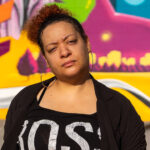 Roxxanne O’Brien: Before the Uprising, racism was still a taboo word. You couldn’t call it out without white folks falling apart— but I did anyway. Even when my own people told me that white people won’t listen—that they are skilled in pulling and dragging you down—I still did it. I felt the urgency to argue and challenge and agitate white folks in my neighborhood; to force them to listen by calling out their hypocrisy and giving them a dose of our pain. They can’t stand to hear our anger and frustration. They just want us to shut up and take it.
Roxxanne O’Brien: Before the Uprising, racism was still a taboo word. You couldn’t call it out without white folks falling apart— but I did anyway. Even when my own people told me that white people won’t listen—that they are skilled in pulling and dragging you down—I still did it. I felt the urgency to argue and challenge and agitate white folks in my neighborhood; to force them to listen by calling out their hypocrisy and giving them a dose of our pain. They can’t stand to hear our anger and frustration. They just want us to shut up and take it.
This is why the Uprising happened. People were tired and angry of holding onto oppression and stress and white supremacy. It was like a bomb waiting to explode.

Robin Wonsley Worlobah: Before George’s murder, COVID-19 had revealed the exploitative system of racial capitalism. Amazon owner Jeff Bezos tripled his company’s net worth during the first three months of the pandemic. Hourly and healthcare workers—many of whom are Black, Brown, and women— worked without hazard pay, relief assistance, personal protective equipment, or sick time. African Americans represented 23% of COVID 19 related fatalities while making up 13% of the U.S. population. Now state repression and violence compelled BIPOC and non-POC residents to risk their lives to protest the unwarranted execution of George Floyd.
The Night the Minneapolis Police Murdered George Floyd, May 25, 2020
 Robin Wonsley Worlobah: On Monday, May 25th, I sat in my car, paralyzed by an image that appeared at the top of my Facebook timeline: Officer Chauvin, with his knee buried in George Floyd’s neck. I tried to regain control over my breath and nervous system. Tuesday morning news outlets reported that George Floyd’s death was the result of medical distress. At this point, millions of people across the world saw the video of George’s public execution. What they saw directly contradicted the police report. Minneapolis residents understood these false allegations were grounded in MPD’s extensive history of negating responsibility and accountability for brutalizing and executing Black and Brown men, women, and youth.
Robin Wonsley Worlobah: On Monday, May 25th, I sat in my car, paralyzed by an image that appeared at the top of my Facebook timeline: Officer Chauvin, with his knee buried in George Floyd’s neck. I tried to regain control over my breath and nervous system. Tuesday morning news outlets reported that George Floyd’s death was the result of medical distress. At this point, millions of people across the world saw the video of George’s public execution. What they saw directly contradicted the police report. Minneapolis residents understood these false allegations were grounded in MPD’s extensive history of negating responsibility and accountability for brutalizing and executing Black and Brown men, women, and youth.
The First Mass Protest, May 26, met with Tear Gas and Rubber Bullets
 David Gilbert-Pederson: On the first night after the murder of George Floyd by four Minneapolis cops, there was a march from 38th and Chicago, where he was killed, to the 3rd precinct police station on Lake Street—the start of the Minneapolis Uprising. It was a powerful and beautiful thing to see young, working-class people leading. It was unlike the leadership I have seen in other actions. During the march, I remarked that there weren’t any police, which was unusual. It wasn’t until we got to Lake Street and Hiawatha, that we saw any cops. Four police cars sped by us, racing to the 3rd precinct building so fast they almost hit a car.
David Gilbert-Pederson: On the first night after the murder of George Floyd by four Minneapolis cops, there was a march from 38th and Chicago, where he was killed, to the 3rd precinct police station on Lake Street—the start of the Minneapolis Uprising. It was a powerful and beautiful thing to see young, working-class people leading. It was unlike the leadership I have seen in other actions. During the march, I remarked that there weren’t any police, which was unusual. It wasn’t until we got to Lake Street and Hiawatha, that we saw any cops. Four police cars sped by us, racing to the 3rd precinct building so fast they almost hit a car.
As we got to the parking lot of Minneapolis’ 3rd precinct, the police exploded out of the building, indiscriminately firing at the crowd with teargas, smoke, flashbangs, rubber bullets, and paint bombs. I was standing with some middle and high school students. It was shocking to see the cops hit those kids with gas and lime green paint dust. I told them, “If you got paint on you, wash it off immediately. That is how they mark people for arrest later.”
I then turned around and began helping people who had gotten teargassed. I was pouring milk on a woman’s face when I felt this explosive pain in my thigh. I think they hit me with an “impact round,” a nerf-like foam grenade covered in hard plastic. I hit the ground. My friends said they were picking out medics and people who looked like leaders.
I have had many unnecessary run-ins with police. I am desensitized to police misconduct. Growing up in a social justice community, with the Philippine Study Group, I heard about militaries and police in other countries, who targeted press and medics. The Israeli Defense Force targets Palestinian health care workers. The Chilean army, this past year, attacked the press, blinding journalists with nonlethal bullets. I knew the US military supports and trains troops that violently suppress independent media. I’ve been down to the School of the Americas protests. We always knew it was possible here, especially in the 3rd precinct, but there was something about the way they shot children, elders, medics, and the press, that was shocking. I am not used to seeing that on the streets of Minneapolis.
I have watched the press conferences where the Minneapolis Mayor and Chief argued they were in charge that night. They are lying. They either ok’d the attacks on protesters, or they had no control over the police department that night. Some journalists saw the police unloading chemical irritants and bringing them into the precinct.
When you want to know who started a riot, look at who came ready for a riot. The confrontation on Lake Street was started by the police.
 Robin Wonsley Worlobah: On Tuesday, local civil rights and anti-police brutality groups called for a mass protest for that evening. It would draw over 20,000 people. It began in front of Cups Food, where the murder took place. Thousands attempted social distancing while listening to speakers demanding justice. The crowd then marched towards the 3rd Precinct Police Station, which housed the murdering officers. Thousands of Black and Brown youth surrounded the station, leading chants, and songs. Several Black mothers spoke to the crowd about the racialized fears and realities of raising Black boys and girls. Overwhelmed with admiration, grief, and joy, I left the protest crying into my close friend’s arms.
Robin Wonsley Worlobah: On Tuesday, local civil rights and anti-police brutality groups called for a mass protest for that evening. It would draw over 20,000 people. It began in front of Cups Food, where the murder took place. Thousands attempted social distancing while listening to speakers demanding justice. The crowd then marched towards the 3rd Precinct Police Station, which housed the murdering officers. Thousands of Black and Brown youth surrounded the station, leading chants, and songs. Several Black mothers spoke to the crowd about the racialized fears and realities of raising Black boys and girls. Overwhelmed with admiration, grief, and joy, I left the protest crying into my close friend’s arms.
By 12pm, we were at the Longfellow Market purchasing food supplies for 3rd Precinct protestors. Twin Cities Democratic Socialist of America (TC-DSA) and DSA National raised over two thousand dollars that morning, to pay for the supplies.
Just as we were unloading the supplies, police officers began shooting tear gas and rubber bullets into the crowd. I taped it on Facebook live until I began to feel the effects of teargas. I struggled to breathe and could barely see. My eyes burned. One of my DSA comrades got me milk to cleanse my face and escorted me to a safe shelter.
Minutes later, crowds returned to the 3rd Precinct. As I collected myself at my friend’s home, I reflected on the bravery and dedication of those protestors. I wanted to show up for them. My Venmo account showed more donations from my DSA comrades. I asked my friends to join me for another supply run.
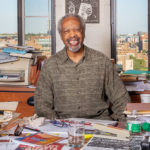 August Nimtz: The Tuesday May 26th early evening protest was different. Thousands of people in Minnesota’s largest city gathered peacefully, determined to vent their anger at the latest outrage on the part of the Minneapolis police force. Though the mainstream media focused on the violent acts of anger at the end of the mass mobilization—and since then—the important story is what happened three hours earlier. The mobilization was one of the largest protests against police brutality since the 1992 Rodney King demonstration in the city.
August Nimtz: The Tuesday May 26th early evening protest was different. Thousands of people in Minnesota’s largest city gathered peacefully, determined to vent their anger at the latest outrage on the part of the Minneapolis police force. Though the mainstream media focused on the violent acts of anger at the end of the mass mobilization—and since then—the important story is what happened three hours earlier. The mobilization was one of the largest protests against police brutality since the 1992 Rodney King demonstration in the city.
African-Americans of my generation, still marvel at the racially diverse composition of anti-police brutality protests today. White people were virtually absent from such protests in the 1960s. On Tuesday May 26th, they were in the majority. This is a big deal. It is important that, from the first day, the outrage over Floyd’s death was massive and multi-racial.
The Burnings of Lake Street and Plymouth Avenue, May 27 and 28
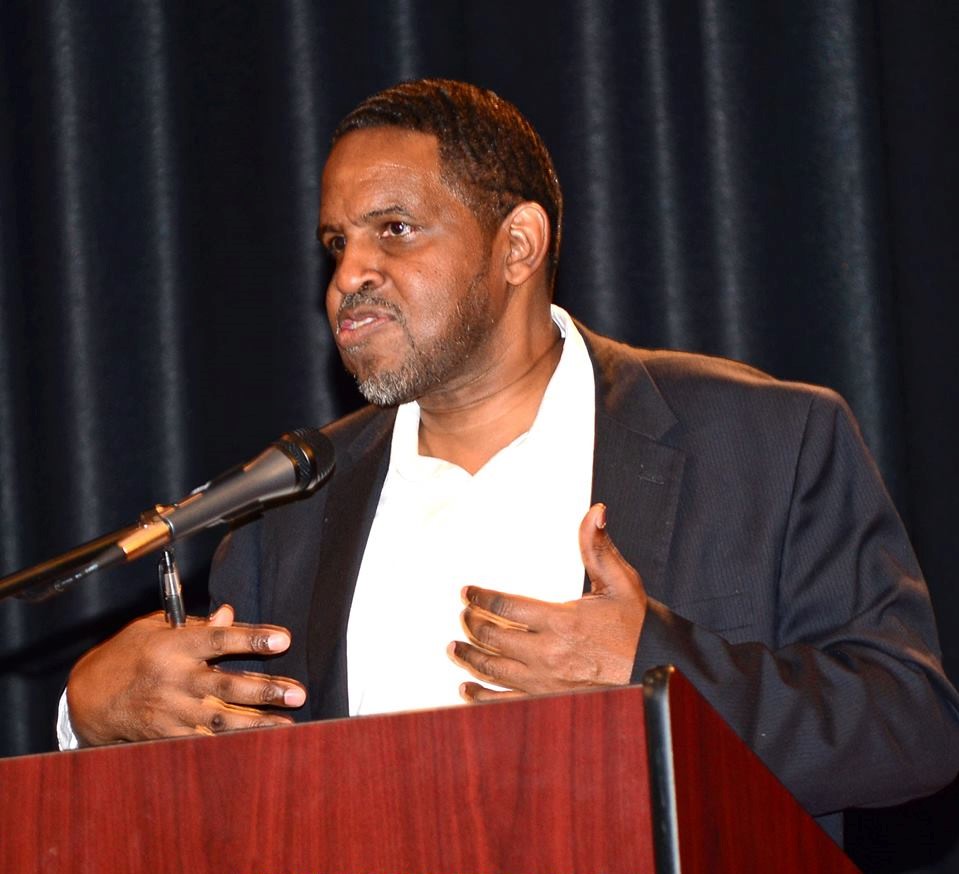 Mel Reeves: Minneapolis burned last night. The nation got a foretaste of what is to come. A beaten down people will not stay beaten down forever. You can hold them down but they won’t be held down forever. The match was lit by the cop, Derek Chauvin, who ignored pleas for mercy while flaunting his power, and rubbed it in our faces, as he murdered George Floyd with a smile on his face. The psychopath –what else could he be– finally got to do what he joined the force to do, which was to see what it felt like to kill a human being, a Black human being.
Mel Reeves: Minneapolis burned last night. The nation got a foretaste of what is to come. A beaten down people will not stay beaten down forever. You can hold them down but they won’t be held down forever. The match was lit by the cop, Derek Chauvin, who ignored pleas for mercy while flaunting his power, and rubbed it in our faces, as he murdered George Floyd with a smile on his face. The psychopath –what else could he be– finally got to do what he joined the force to do, which was to see what it felt like to kill a human being, a Black human being.
For those who choose to sit in judgement: Merchandise can be replaced. Black lives cannot.
A volatile mix of youth who have been locked down due to the coronavirus pandemic, and those who suddenly find themselves unemployed, coupled with the outrage over the brutal, televised cop murder of George Floyd –who the youth identified as one of their own– caused emotions to overflow.
The police provoked the protesters on the first night. It was as if the cops wanted the young people to riot, as a way of taking the attention off them so they could say, ‘We are not the animals; they (the rioters) are the animals.’
Adding even more fuel to the anger, was the system dragging its feet. The mayor of Minneapolis Jacob Frey said in his press conference the day before that the cops who killed George Floyd “should be in jail.” What he should have said is, we are arresting the officers and charging them to the fullest extent of the law: namely murder. It is not incorrect to assume that justice delayed, may become justice denied.
It was fire this time started by people who have been whipped into a crazed frenzy. It was looting this time, it was stealing of tennis shoes and cell phones, this time. Eventually, yes one day, the people oppressed by this low down, filthy, rotten, murderous system will educate themselves; analyze, organize and mobilize until they find a way to bring about a change that will allow BLACK, BROWN, RED, YELLOW, IMMIGRANT, MUSLIM, GAY, TRANS, STRAIGHT, MALE, FEMALE—ALL OF THE 99% —to live and be recognized as human beings, in a society of human beings. (Excerpted from Fight The Power)
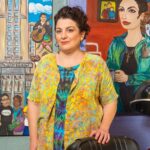
Tammy Ortegon: It was scary enough with COVID 19. The loss of resources, schools, clinics & community connections during social distancing, spotlighted disparities in our communities. People with access & privileges had safe, comfortable places to quarantine, and healthcare benefits. They were able to take a break from reality, go to their cabins, catch up with family time. Others lived in small apartments, trying to home school their children, working full time with no daycare, or required to work outside, risking their health and that of their families.
Now, seeing the destruction, fires, damage to East Lake Street, I think about the changes I have witnessed over the last decades to this area: Changes for the good of the people.
So many independent immigrant & BIPOC businesses & safe spaces were destroyed. Many didn’t have the “riot insurance” rider. Talk about looting’! You pay into your insurance & then can’t use it when you need it! It’s just another way of keeping people down in an unjust system. Corporations like Target will be fine. So many people lost income and will not be able to pay rent. We have more homeless people living in tents. What’s going to happen in the next few months? Rent is always due.
East Lake Street is ripe for gentrification. It was already happening. What will go up now in the places that were destroyed? Who has money? Who has access?
We will need to ReImagine & rebuild small businesses, public art, community centers, immigrant businesses to make E Lake Street beautiful & useful to the community.
 Robin Wonsley Worlobah: Decades of unreconciled state repression and violence, coupled with George Floyd’s public execution/lynching, justifiably triggered forceful and destructive actions from Black and Brown folks and supporters. Early Wednesday morning, local businesses were looted and set aflame. A DSA comrade asked members to come and protect their home and business from looters. As my fellow DSA members began to coordinate who would protect our comrade, a different exchange took place on the same thread. One comrade shared footage of protestors being teargassed by officers at the 3rd Precinct. Another shared that a business owner killed a looter.
Robin Wonsley Worlobah: Decades of unreconciled state repression and violence, coupled with George Floyd’s public execution/lynching, justifiably triggered forceful and destructive actions from Black and Brown folks and supporters. Early Wednesday morning, local businesses were looted and set aflame. A DSA comrade asked members to come and protect their home and business from looters. As my fellow DSA members began to coordinate who would protect our comrade, a different exchange took place on the same thread. One comrade shared footage of protestors being teargassed by officers at the 3rd Precinct. Another shared that a business owner killed a looter.
I understood and supported the actions of protestors. I knew the state would launch a lethal counterattack. As Socialists, our role is to not lead or pacify working-class and BIPOC communities, but to demonstrate active solidarity.
National Guards Descend, Neighborhoods Organize for Self Defense and Food Distribution
 Tammy Ortegon: AIM & other community activists & neighbors are protecting our neighborhoods, businesses & streets. That kept many of us going in the last weeks. It also woke up many privileged, comfortable people, to see the police, sheriff’s dept & national guard harassing protesters, media, religious leaders & community members, shooting teargas, rubber bullets, in a war-like manner. They terrorized people & neighborhoods, while white supremacist militias ran free, trying to destroy our city. It made people begin to question the lies they were told.
Tammy Ortegon: AIM & other community activists & neighbors are protecting our neighborhoods, businesses & streets. That kept many of us going in the last weeks. It also woke up many privileged, comfortable people, to see the police, sheriff’s dept & national guard harassing protesters, media, religious leaders & community members, shooting teargas, rubber bullets, in a war-like manner. They terrorized people & neighborhoods, while white supremacist militias ran free, trying to destroy our city. It made people begin to question the lies they were told.
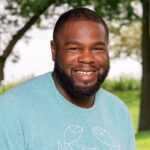 Drew Edwards: I patrolled North Minneapolis myself on those nights the National Guard and white supremacists roamed our streets: 3am -6am, down Dowling & Penn to James & Lowry. It left me with a few thoughts: 1. Our community is beautiful, diverse, and capable. 2. We have many displaced people who struggle in our streets with drugs and prostitution. 3. Countless people have stepped up. I see people/cars on watch, others helping their neighbor. Many have prioritized family/community as everyone’s responsibility. We are stronger together.
Drew Edwards: I patrolled North Minneapolis myself on those nights the National Guard and white supremacists roamed our streets: 3am -6am, down Dowling & Penn to James & Lowry. It left me with a few thoughts: 1. Our community is beautiful, diverse, and capable. 2. We have many displaced people who struggle in our streets with drugs and prostitution. 3. Countless people have stepped up. I see people/cars on watch, others helping their neighbor. Many have prioritized family/community as everyone’s responsibility. We are stronger together.
 Robin Wonsley Worlobah: By Thursday morning, most of the businesses surrounding the 3rd Precinct had been looted or burned. Protestors still occupied the area. I turned to my ancestors and past freedom fighters for wisdom and insights, skimming through autobiographies of Black Panther Party (BPP) leaders, Assata Shakur and Elaine Brown.
Robin Wonsley Worlobah: By Thursday morning, most of the businesses surrounding the 3rd Precinct had been looted or burned. Protestors still occupied the area. I turned to my ancestors and past freedom fighters for wisdom and insights, skimming through autobiographies of Black Panther Party (BPP) leaders, Assata Shakur and Elaine Brown.
In the 1960’s, the BPP had launched a transformative political program that would both politicize poor and working-class Black residents, by tending to their basic material needs, which had been ignored by the state and corporate forces. The BPP Free Breakfast program was among their most powerful political initiatives.
In the Hi-Lake area, protests and subsequent looting had forced all surrounding grocery stores to shut down, and it was not clear when those stores would re-open. Food and medical supplies were a major and immediate need in that community. A cadre of DSA members and I decided that we would start a food relief site.
We agreed that our site would provide food and household supplies to local residents and 3rd precinct protestors. One of our comrades found a location, scouting on bike, dodging plastic bullets and teargas. We needed volunteers to drop off groceries, go on supply runs, and prepare hot meals, all of which required money.
In less than 12 hours, we got the TC-DSA Food Justice Distribution Relief Site running. For two weeks, it provided groceries, supplies, and hot meals to hundreds of locals, protestors, and homeless residents who occupied the Sheraton Hotel and, later, the Sanctuary in Powderhorn Park.
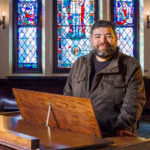
Ahmed Anzaldua: Although this last week my life’s been mainly about raising money, helping clean, and deliver groceries, I am a musician, and I need music to make sense of the world. I used social media to share “St. Martin of Porres” by Mary Lou Williams from a concert Border CrosSing performed last year at Church of the Ascension in north Minneapolis.
“St. Martin of Porres” is the first track of Mary Lou Williams’ album “Black Christ of the Andes” and is a hymn dedicated to a Black saint from Peru, canonized in 1962, a saint that is venerated all throughout Latin America as a miraculous healer and regarded as the patron saint of all those that seek racial healing. Mary Lou recognized that we live in a broken system and saw herself as a healer; she believed firmly in music’s capacity to heal the soul and how necessary that individual healing is for our society to heal.
 Drew Edwards: One of the things I did was help organize food & supply giveaways at God be the Glory Ministries. I wondered if this was what MLK was talking about in terms of the dream of seeing people coming together, because I have never seen such solidarity and unity from all people in all spaces. I continue to challenge people to not get complacent, to push the narrative and the tone. We are setting the tone not only for ourselves but for the future. We need to push the highest presentation of one another. We all need to come to the table willing to sacrifice what we have for the greater benefit of all of us.
Drew Edwards: One of the things I did was help organize food & supply giveaways at God be the Glory Ministries. I wondered if this was what MLK was talking about in terms of the dream of seeing people coming together, because I have never seen such solidarity and unity from all people in all spaces. I continue to challenge people to not get complacent, to push the narrative and the tone. We are setting the tone not only for ourselves but for the future. We need to push the highest presentation of one another. We all need to come to the table willing to sacrifice what we have for the greater benefit of all of us.
 David Gilbert-Pederson : After the fires, grocery stores and pharmacies across the Twin Cities closed their doors. To get people food, people all over the Metropolitan area organized pop-up distribution sites.
David Gilbert-Pederson : After the fires, grocery stores and pharmacies across the Twin Cities closed their doors. To get people food, people all over the Metropolitan area organized pop-up distribution sites.
The Pimento is a Jamaican restaurant three blocks from my house, in the working class, immigrant, and Indigenous neighborhood of Whittier in Minneapolis. Their rum bar had been closed since the pandemic, so they opened that section of their building up as a location for the distribution of nonperishable groceries and necessary goods. People brought their donations of food, diapers, household cleaning supplies, and personal hygiene products. Scott McDonald, who works at Pimento, and other Black leaders in the community organized it. I made it my job to direct traffic and sort donations. After a week, the process evolved into a system. Now we give out donations—everything free—on Monday and Friday, and take in and sort donations mid-week. We create bags of food with a full complement of nutrients, and household packs. We have served hundreds of families and thousands of people in the Whittier neighborhood in the last two weeks.
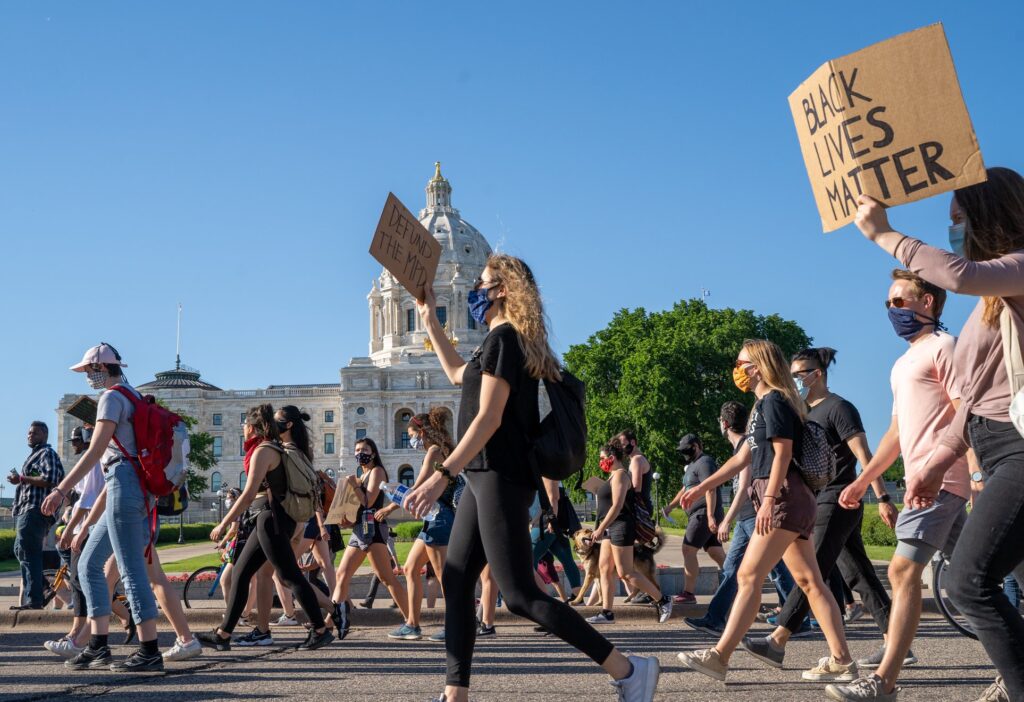
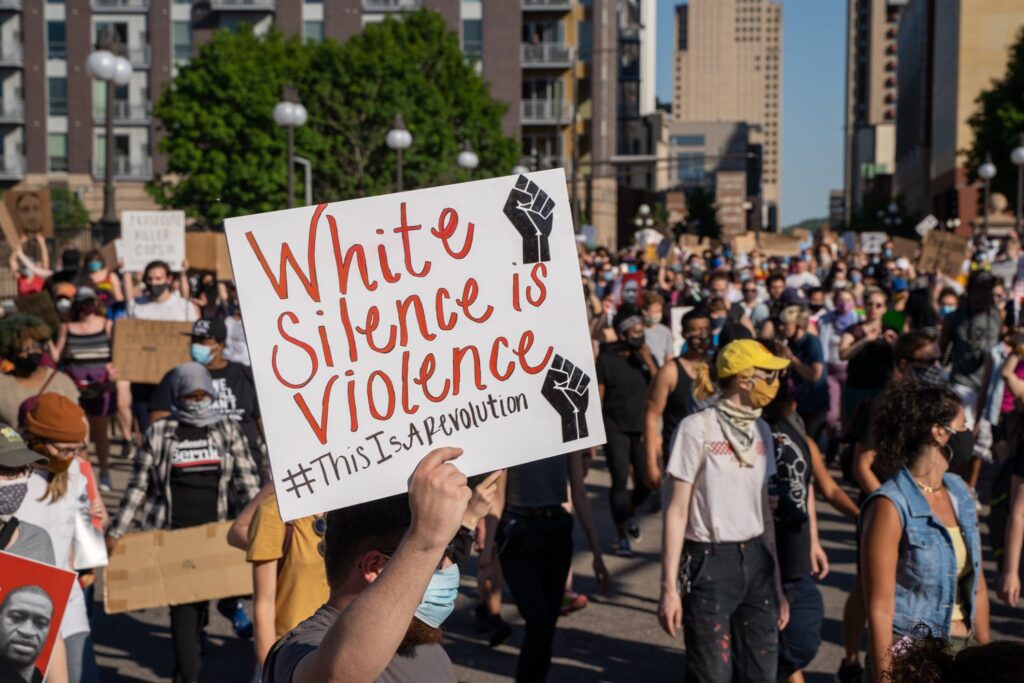
Statues Come Down
 Tammy Ortegon: I felt hope when our Indigenous Communities took down the Columbus statue on the Minnesota State Capitol grounds, and people around the country removed their racist statues. The nationwide uprising and revolution that we’ve been hoping for is here, starting in our city. The spark that cried “ENOUGH.”
Tammy Ortegon: I felt hope when our Indigenous Communities took down the Columbus statue on the Minnesota State Capitol grounds, and people around the country removed their racist statues. The nationwide uprising and revolution that we’ve been hoping for is here, starting in our city. The spark that cried “ENOUGH.”
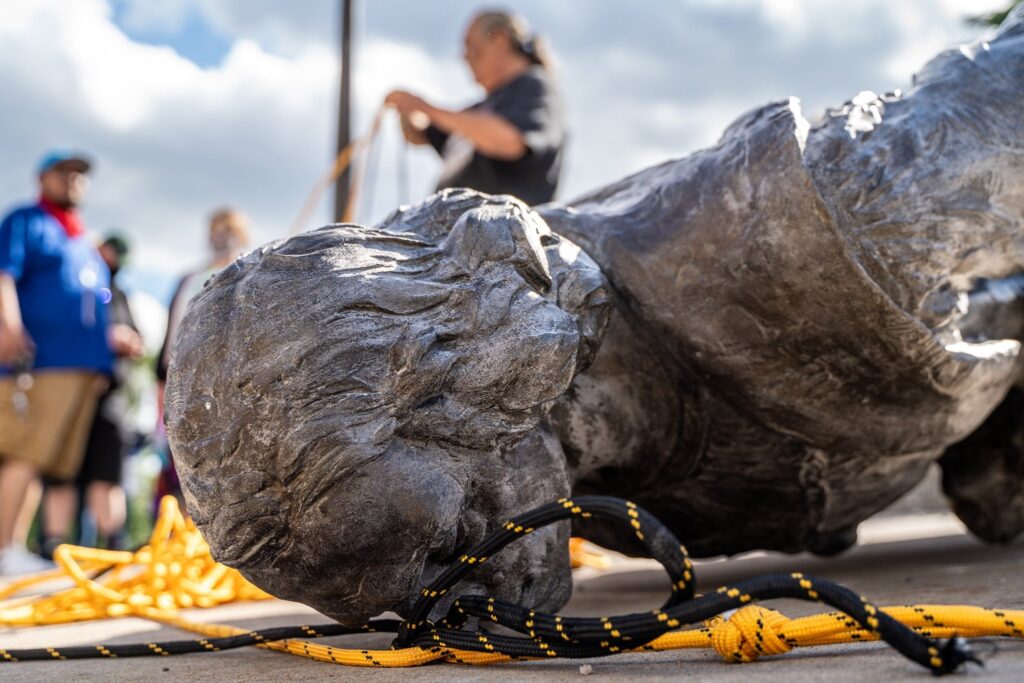
Latinx Community Responds with Anger and Solidarity

Ahmed Anzaldua: I’ve spent a lot of time this week with my Latinx communities here in the Twin Cities. There is real pain and anger in our communities, both in reaction to the tragic killing of George Floyd and to the widespread destruction of our neighborhoods.
Racism is also present in the Latinx community, and it has always been difficult to root it out; Latinxs come in all shades and colors and are also the victims of injustice, persecution, police brutality, mass detention, and mass deportation in the United States. However, even in the midst of our present pain and anger, I am seeing something different, something I had not seen before. I am seeing young Latinxs calling out their elders on racist remarks. I am seeing a renewed solidarity between Latinx and Black communities. I am seeing Latinx business owners who would normally not hesitate to call the police on a Black person call for the disbandment of the police.
I saw Cadex Herrera, Pablo Helm-Hernandez, and Xena Goldman, three young Latinx artists, rush to the corner of Chicago and 38th St. to paint the now emblematic mural that marks the site of George Floyd’s killing. We are finally starting to wake up to the fact that turning on each other has only served to keep us all down. The brutal reality of the video of George Floyd and the explosion of grief that followed it laid bare for most of us that, in the white gaze, we are all Black, that the only right thing to do, the one thing we must do to ensure our own survival, is to start acting like it. We are all Black now.
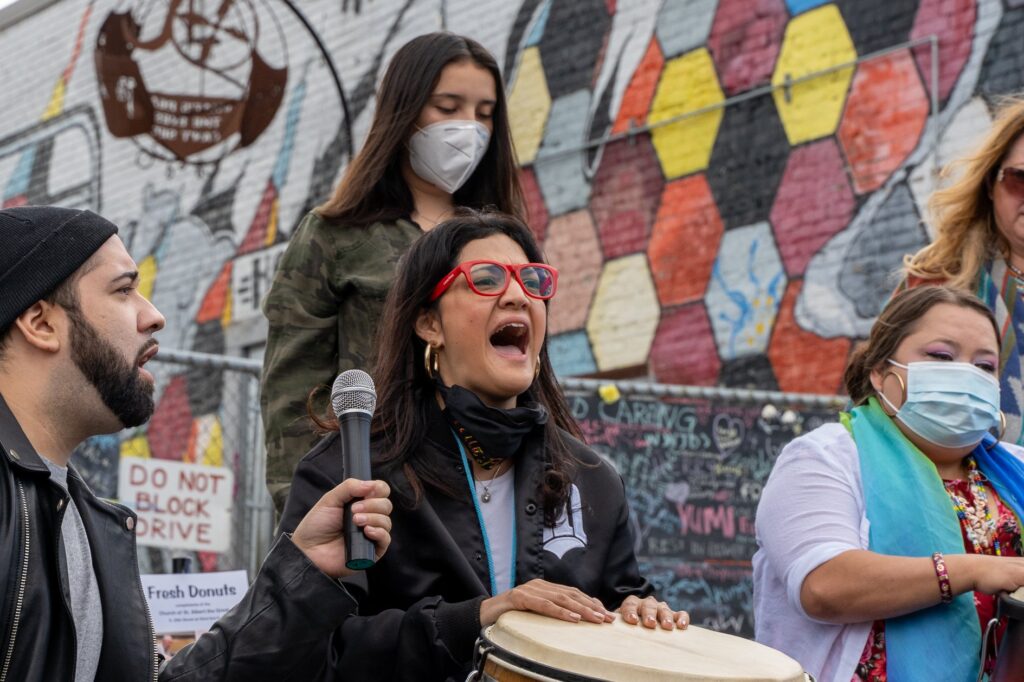
Personal and Historical Memories of Other Contexts
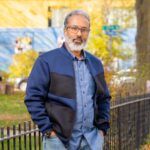 Mustafa Diriye: Watching the senseless murder by Minneapolis police brought me back to the last time I witnessed a murder in Mogadishu in 1991. I was 17 years old, viewing death in my own hometown—that was supposed to be my place of safety. It deeply traumatized me. I think it is safe to say there are many refugees such as myself who feel disbelief, discomfort, and trauma just as I do.
Mustafa Diriye: Watching the senseless murder by Minneapolis police brought me back to the last time I witnessed a murder in Mogadishu in 1991. I was 17 years old, viewing death in my own hometown—that was supposed to be my place of safety. It deeply traumatized me. I think it is safe to say there are many refugees such as myself who feel disbelief, discomfort, and trauma just as I do.
I constructed a policy paper as a Roy Wilkins Community Fellow on police brutality in 2017, after Philando Castile was murdered on video tape. Why didn’t that killing send a message to the police to stop?
I am having second thoughts about raising my child in this country. It is tough to be a black person in the US, where the color of your skin and zip code determine the destination of your life. This type of killing cannot be excepted! Never again!!
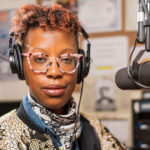 Valerie Déus: I’ve been thinking about the idea of ancestral memory and wondering whether this is how my ancestors felt at the beginning of the Haitian Revolution. The first few days the smell of smoke and fire sit on your skin and in your hair. The smell stays with you and with every person you meet.
Valerie Déus: I’ve been thinking about the idea of ancestral memory and wondering whether this is how my ancestors felt at the beginning of the Haitian Revolution. The first few days the smell of smoke and fire sit on your skin and in your hair. The smell stays with you and with every person you meet.
Fighting for independence and the right to self-determination must have been equal parts exciting and terrifying, but not more terrifying then accepting French colonial rule. Living without freedom and self-determination is equivalent to zombiehood, the living dead.
When I walk through my neighborhood I see the rage and hurt of my community after being gas lit and ignored for generations. I see the skeletal remains of corporations who make money from us but will rarely hire us. Instead we are expected to swallow the injustice and the indignity of security following us around, while suburban kids, on a day trip, steal.
But I am also surrounded by beautiful artwork that tell the story of pain, beauty and community being experienced by all of us. We are tired, but we are loving and caring for each other. We need to remember these lessons of love when the cameras are gone and the streets are clear. I am greeted by neighbors who seem to say hi out of new solidarity instead of the regular baseless fear. I see a community strategizing and supporting each other, creating new bonds previously unimaginable, that will change the way future generations perceive us, our people and our place in the world.
I am, for the first time, hopeful.
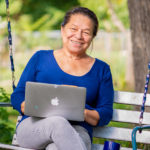 Marcie Rendon: Feeling deep sorrow, knowing this is all happening on stolen land. For Indian people this is not our first pandemic and certainly not our first war.
Marcie Rendon: Feeling deep sorrow, knowing this is all happening on stolen land. For Indian people this is not our first pandemic and certainly not our first war.
 August Nimtz: Why are there no police murders in Cuba? The hated US-backed Fulgencio Batista regime— overthrown in 1959—was notorious for its brutality. Its police were particularly sanguinary. A parent going to a police station in search of a missing son dreaded to hear the detested “se estaba ” from the authorities—”he used to be”. For Afro-Cubans the situation was especially horrific. This is why many of the police assassins, some of whom were Black, were tried and executed within months of the revolution’s triumph on 1 January 1959, to the applause of millions of Cubans.
August Nimtz: Why are there no police murders in Cuba? The hated US-backed Fulgencio Batista regime— overthrown in 1959—was notorious for its brutality. Its police were particularly sanguinary. A parent going to a police station in search of a missing son dreaded to hear the detested “se estaba ” from the authorities—”he used to be”. For Afro-Cubans the situation was especially horrific. This is why many of the police assassins, some of whom were Black, were tried and executed within months of the revolution’s triumph on 1 January 1959, to the applause of millions of Cubans.
Am I guilty of comparing apples and oranges—two very different societies? The history of both societies suggests otherwise. If the murder of George Floyd has its origins in the institution of racial slavery, then we should expect to see similar outcomes in Cuba. It existed there almost a century before being planted in what would become the United States. And it outlived America’s “peculiar institution” by two decades. But what happened to George Floyd simply does not happen in Cuba.
Think of another country in the Americas with a long history of racial slavery—Brazil—where the police regularly kill blacks with impunity. What, then, explains Cuban exceptionalism? The 1959 triumph of the Cuban Revolution. (Edited Excerpt .Full essay here)
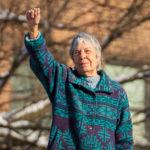 April Knutson: When 35W Freeway bridge collapsed, I was on my way back from visiting my mother and old friends in Iowa. I got many phone calls from family and friends wondering if I was ok. I assured them that I exited the interstate south of the collapse. Later I found out that a good friend of my daughter had been on the bus from Waite House that had almost fallen into the river. She was the instructor of the students on the bus. She rushed forward and helped the bus driver to prevent the bus from plunging into the Mississippi River. She was very badly injured.But she is healthy now.
April Knutson: When 35W Freeway bridge collapsed, I was on my way back from visiting my mother and old friends in Iowa. I got many phone calls from family and friends wondering if I was ok. I assured them that I exited the interstate south of the collapse. Later I found out that a good friend of my daughter had been on the bus from Waite House that had almost fallen into the river. She was the instructor of the students on the bus. She rushed forward and helped the bus driver to prevent the bus from plunging into the Mississippi River. She was very badly injured.But she is healthy now.
During the protests against George Flyod’s torture and murder by the MPD, my daughter-in-law and my grandsons were on the same bridge when the tanker came through. Terrifying! but they are ok.
So much tragedy on this bridge across the mighty Mississippi.
Deep Organizing at a Neighborhood Level
 David Gilbert-Pederson (Whittier Neighborhood): On Saturday, June 6, we had a community healing event at Pimento, addressing needs beyond food and diapers. We created murals on the sides of businesses. We had sessions of socially-distant yoga and aerobics in the parking lot, bringing space for the community to come together in a stressed out neighborhood heavily hit by white supremacists and police. A group of musicians, piano, guitar, played and led a singalong. We ended with all of us singing Bill Withers’ Lean on Me.
David Gilbert-Pederson (Whittier Neighborhood): On Saturday, June 6, we had a community healing event at Pimento, addressing needs beyond food and diapers. We created murals on the sides of businesses. We had sessions of socially-distant yoga and aerobics in the parking lot, bringing space for the community to come together in a stressed out neighborhood heavily hit by white supremacists and police. A group of musicians, piano, guitar, played and led a singalong. We ended with all of us singing Bill Withers’ Lean on Me.
 Robin Wonsley Worlobah (Hi-Lake Neighborhood, South Minneapolis): Beginning in mid-July, in addition to providing food and supply distribution services to local Hi-Lake residents, we will hold weekly community meetings. BIPOC groups will share their work around abolition, community defense, housing, and land reclamation, and the ways Hi-Lake residents can equitably and democratically rebuild and protect their communities.
Robin Wonsley Worlobah (Hi-Lake Neighborhood, South Minneapolis): Beginning in mid-July, in addition to providing food and supply distribution services to local Hi-Lake residents, we will hold weekly community meetings. BIPOC groups will share their work around abolition, community defense, housing, and land reclamation, and the ways Hi-Lake residents can equitably and democratically rebuild and protect their communities.
Our purpose is to build confidence amongst Black & Brown and working-class people, that we are capable of protecting and caring for our communities. We have done so for many generations without the help of the police. I hope we will ignite a fire within Hi-Lake residents to band together and organize against the forces that aim to profit from the re-development of Hi-Lake’s Ground Zero. We need to demand that corporate businesses and city officials invest in Black and Brown lives by fully funding our community’s neglected social safety nets: housing, healthcare, food, and employment. You cannot support Black lives without investing in their wellbeing and livelihoods.
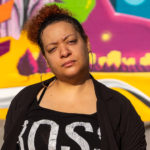 Roxxanne O’Brien (Folwell Neighborhood, North Minneapolis): Since the Uprising, my organizing and activist life has sped up. The initiatives I was moving slowly on, have suddenly prioritized themselves. I had been working on environmental justice issues, which has a strong component of protecting people from bodily harm. Our focus is on protecting the earth and each other. We were already talking about holistic solutions to climate chaos, police brutality, racism, capitalism, toxins, healing… these are all part of our work. So the Uprising just created a greater urgency.
Roxxanne O’Brien (Folwell Neighborhood, North Minneapolis): Since the Uprising, my organizing and activist life has sped up. The initiatives I was moving slowly on, have suddenly prioritized themselves. I had been working on environmental justice issues, which has a strong component of protecting people from bodily harm. Our focus is on protecting the earth and each other. We were already talking about holistic solutions to climate chaos, police brutality, racism, capitalism, toxins, healing… these are all part of our work. So the Uprising just created a greater urgency.
Organizing is the work some of us do behind and in front of the scenes. It’s about building the relationships with people, and holding those responsible for the exploitation of our communities. It’s also about building a new community system to protect each other. Laying out that system requires us to be accountable to each other because the white supremacist patriarchal system won’t retreat on its own.
We can’t wait until another person is killed to act.
Starting June 7th, we began hosting Saturday assemblies at Phelps Park, rooted in four community organizing principles:
- All Black Lives Matter
- Listen to Black people
- Break bread with your neighbor
- Community accountability
We are part of the Movement for Black Lives ecosystem. The powers that be are not going to frame George Floyd’s murder in the broader context because it demonstrates a much deeper injustice, that has been compounding over time. Chicago Avenue is an old racial boundary and has been battled over for decades. We frame it this way to our community, that is a 400 year battle on this soil over land. If you are not framing what is happening as the fall of apartheid then you are not framing it right. And it is apartheid that is a radical idea, not the dismantling of it. Everyone will have to account for what they’ve done to Black people in this town.
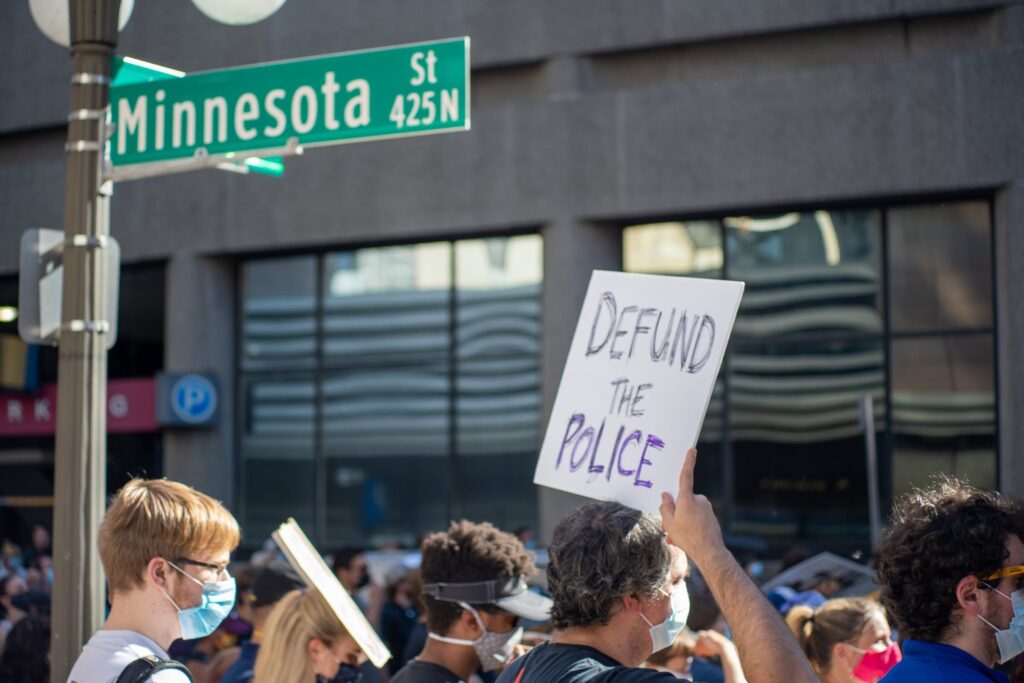
Transform, Defund, Abolish Police
Discussion of defunding and/ or transforming the police department has been going for decades in Minneapolis, but it heated up after the the murders of Jamar Clark and Philando Castile. In the last five years two radical ideas have gained sway: 1. putting the police under community control, or 2. Abolishing the police.Read these discussions here In June of 2020, the discussion became a community demand and the City Council pledged to begin process of defunding the police.
 Robin Wonsley Worlobah: The Defund & Dismantle MPD Movement has garnered momentum across the country and in Minneapolis. Still, many working-class Black and Brown residents are not in support of police abolition. Poor and Black and Brown communities perpetually lack the resources and social safety nets that weaken reliance on anti-Black systems of policing. Some fear that BIPOC communities will descend into chaos in the absence of an organized police force.
Robin Wonsley Worlobah: The Defund & Dismantle MPD Movement has garnered momentum across the country and in Minneapolis. Still, many working-class Black and Brown residents are not in support of police abolition. Poor and Black and Brown communities perpetually lack the resources and social safety nets that weaken reliance on anti-Black systems of policing. Some fear that BIPOC communities will descend into chaos in the absence of an organized police force.
The TC-DSA Food Justice Program decided to link food access to political education and action. We wanted to offer Hi-Lake residents a space where they could learn about the destructive role police assume in our communities, and anti-policing alternatives.
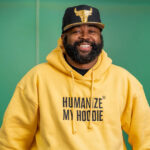
Jason Sole: Abolishing the police does not mean there won’t be accountability for people who harm others. Divesting from police means that money can be used to house the unhoused. Divesting from police means that we can provide culturally specific drug treatment for those struggling with addiction. Divesting from police means that we can provide more jobs and business ownership to youth. These three things make us safer. We can hold people accountable without putting them in cages. If necessary, we can discuss what a community holding space looks like.
Six of my friends and I reduced crime for years in Saint Paul. We did so well it was co-opted by the government. Think about how I helped create a model that reduced sexual offending back in 2007.
We watched the police lynch George Floyd. If you don’t believe in abolition, it makes me feel like you’re okay with a cop possibly strangling me to death. Their training doesn’t work. Our data tells us that we are being hunted by police overseers.
A world without police officers is possible. We know amazing therapists who are also licensed to carry. They would only possess a firearm if the situation required one (e.g., defense against White supremacists). We know many aunties who can deescalate in dangerous situations. We already have the solutions; we just need the oppressor to stop oppressing us. #AbolishThePolice
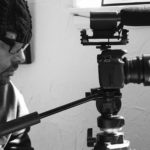 D.A. Bullock: This might be counter intuitive to some, but follow me. Where trust never bloomed, trust is not reclaimable. It is lost. That is what we have in my neighborhood currently. Folks do not trust the law and its enforcement, the police and the justice system, so they take it upon themselves. Our current condition is not an analog to a world without police, it is a violent condition of a world with them.
D.A. Bullock: This might be counter intuitive to some, but follow me. Where trust never bloomed, trust is not reclaimable. It is lost. That is what we have in my neighborhood currently. Folks do not trust the law and its enforcement, the police and the justice system, so they take it upon themselves. Our current condition is not an analog to a world without police, it is a violent condition of a world with them.
Our current condition is perverse. We are in a perverted state of mind, beholden and limited to a criminal justice system that makes us into better and more dangerous criminals, a system that hardly delivers justice.
The only way to create a trusting environment where we rely on one another for social safety, where we are not dependent strong arm or gun strength, where we don’t feel like aiding justice is snitching, and where this aid is in the service of restorative and transformative justice—is to design and build to that end.
So when you find yourself saying or hearing “See this is what you get in an imaginary world without police” examine the condition. This is what you get in the current world with police. You get no true justice and no actual peace. And your resources are spent.
There is a whole lotta work to do. And we have to do it
Perspectives on Conscious Raising for Two Sides of the Age Spectrum
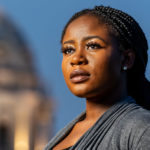
Alfreda Princess Daniels: When there were no cameras, you said we were over reacting (conspiracy theory). Now we have video proof, you are asking for more evidence. When we give more, you tell us how hard it is to be an officer. Give me your badge and take my skin tone for a day. We kneel, you complain (it’s not patriotic).
We put our hands up- you shoot. We run, you shoot. You come into our homes and kill us.
We peacefully march, you complain.
We say black lives matter, you say white lives matter too. Everyday, we struggle to breathe. We are being suffocated by the system. We can’t breathe. I’m tired. If you are white and uncomfortable by this rebellion, get mad and use your privilege to change it. #ICantBreathe
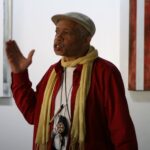 Louis Alemayehu: As a refugee of the 1960s movements, I am seeing and hearing things I have never heard before and I believe it has a lot to do with this younger generation’s leadership, values and vision. To me the BIG change is the voice and visibility of WOMEN of COLOR. Another dynamic is the visibility of of Queer folks in the front ranks. A 3rd dynamic which has been very visible is the number of Euro heritage people following Indigenous & People of Color both at Standing Rock and in the wake of the murder of George Floyd. The Civil Rights Movement gave birth to something that inspired oppressed people to make voice for their power, speak their truths and articulate their visions. Something is manifesting that makes me tremble with inspiration and possibilities. Movements of people from the four directions, reflect that a critical number of people are morphing into something new, unique, powerful and global.
Louis Alemayehu: As a refugee of the 1960s movements, I am seeing and hearing things I have never heard before and I believe it has a lot to do with this younger generation’s leadership, values and vision. To me the BIG change is the voice and visibility of WOMEN of COLOR. Another dynamic is the visibility of of Queer folks in the front ranks. A 3rd dynamic which has been very visible is the number of Euro heritage people following Indigenous & People of Color both at Standing Rock and in the wake of the murder of George Floyd. The Civil Rights Movement gave birth to something that inspired oppressed people to make voice for their power, speak their truths and articulate their visions. Something is manifesting that makes me tremble with inspiration and possibilities. Movements of people from the four directions, reflect that a critical number of people are morphing into something new, unique, powerful and global.
It helps to be 74 in this historical moment, have the ancestry I do, the family that I do and the rich and diverse community that I do. I have learned from everyone. I am learning from younger artists and activists. I listen to the Ancestors.
Minneapolis Uprising Timeline
May 25, 2020 —Witnesses film and post the murder of George Floyd by four Minneapolis Cops at 38th Street and Chicago Avenue, in front of Cup Foods in South Minneapolis.
May 26— Protest begins at 5:00pm at 38th and Chicago, swells to 20,000 as marchers walk to Third Precinct on Lake Street. Cops employ tear gas, flash bombs and rubber bullets.
May 27— Thousands gather at 38th & Chicago and establish a memorial site. Six weeks later, it is more established, with sculpture, murals, gardens, and barriers.— At Third Precinct, protestors met with force. At night, some burn down the 3rd precinct and surrounding businesses on Lake street.— Cops release names of the four officers involved in the murder of Floyd.— Demonstrations spread to Memphis, Tennessee, LA, California, Portland OR, and Louisville Kentucky, and elsewhere, in the name of George Floyd, Breonna Taylor, Ahmaud Arbery and others killed by vigilantes and police.
May 28— Clean up event on Lake and Chicago.— Governor mobilizes National Guard, but they retreat.— Protest at Mike Freeman’s house demanding murder charges for all four officers. Lasts for a week.— City burns for second night, spreads to Northside, 5th precinct area and Franklin Avenue while firefighters, police and National Guard stay away. Residents mobilize to protect their spaces.
May 29 — Trump tweets, “When the looting starts the shooting starts,” threatens to bring in active military to, “Get the job done right”.— Derek Chauvin arrested and charged with third-degree murder.— Pop-up medical aid tents and food distribution sites established.— Police brutality against demonstrators extends to press. Police arrest CNN journalist on camera. WCCO photo-journalist is shot with a rubber bullet.— Protests in Atlanta, New York City, DC., and Detroit. 21-year-old shot in Detroit at the protest
May 30 — Mayor Frey calls protesters involved in burning, domestic terrorists, imposes 8:00 PM curfew, blames out-of-state people for instigating.— Minneapolis and St. Paul Mayors and Governor tell the world in a press conference that all of the arrests were outside agitators, only to have to admit that was a lie, as arrest records become available, showing majority were local.— After another night in which firefighters fail to show up and gas station, post office, and other businesses burn, hundreds of Southside residents gather at Powderhorn Park to organize neighborhood protection groups.— Cops and National Guard, in full riot gear and armored vehicles, shout, “light them up,” as they shoot at people sitting on their steps with rubber bullets and tear gas canisters. Cops are caught on camera slashing tires of press, medics, and protesters in Minneapolis.— A protester in Indianapolis is shot and killed. Two police cars plow into protests in Brooklyn, NY.
May 31— With freeways shut down by National Guard, a massive protest begins in downtown and takes over the empty 35W highway. A tanker truck enters the highway and plows into protestors. Community watches in horror. No one is seriously hurt. The trucker is booked and then let go.— 200 protesters arrested as National Guard and police storm the St. Paul Capitol under rumors that it’s going to be burned down.— Thousands demonstrate peacefully.— Pop-up food distribution sites, including Sanford middle school, distribute massive amounts of groceries and engage an army of volunteers.
June 1 — Neighbors organize overnight walkers, defying the curfew, as rumors fly that the KKK is stashing gasoline in alleys to burn down houses.— George Floyd’s brother visits the memorial site on 38th in Chicago.— Dueling autopsy reports are released.— “Jail all Four” demo at Governor’s residence.— Mobilization at MPS school board, demanding an end to cops in schools.— Governor Walz announces Keith Ellison will take over the case from Mike Freeman: a demand of protestors.
June 2— Health officials express concerns massive demonstrations, combined with the teargas use, will lead to a spike in coronavirusJune 3— Charges against Officer Chauvin increased to 2nd-degree murder.Three other Officers are arrested and charged—rally at WCCO to fire Liz Collin, wife of Bob Kroll.
June 4 — Demonstrations spread to over 75 cities with over 4,400 arrest nationwide.— Al Sharpton in a memorial service for George Floyd in Minneapolis, calls for white people “to get your knees off our necks” and orchestrates eight minutes of silence, representing the time Officer Chauvin kept his foot on George Floyd neck. Family speaks.
June 5— Vigils around country for Brianna Taylor’s 27th birthday
June 6— Mass protest in downtown Minneapolis. Jacob Frey is confronted by protestors who ask him to commit to defund the police. He says no. Video of the confrontation seen around the country,— Mass protests worldwide include New York City, DC, Sydney, London. NYT says BLM largest global protest movement in history, as 26 million demonstrate.
June 7— Dakota leaders ride horseback from Sisserton SD, lead march from North Minneapolis to George Floyd Memorial Plaza, stopping for ceremony at American Indian Center. Native and Black Lives Matter— Postal Workers hold press conference and march for Justice for George Floyd.— Somos George Floyd. Latinx mobilization at 38th and Chicago.— Nine Minneapolis City Council members meet with a thousand people in Powderhorn Park, to announce they in favor of defunding the police.— Confederate statues are pulled down across the US South. Slave trader, Edward Colston statue is pulled down in Bristol, England and thrown into the River.
June 8 — Public Visitation for George Floyd in Houston .— Thirteen Actions took place in different parts of New York City
June 9 — George Floyd’s funeral in Houston is televised live across the country.— Police Chief Arradondo pulls out of negotiations with the police union.
June 10— Columbus statue torn down in Saint Paul.— Demonstrations marking anniversary of lynching in Duluth— Philonise Floyd, brother of George Floyd, testifies in Congress. “The people marching in the streets are telling you, enough is enough.
June 11 — Labor march for Justice for George at Hennepin County Government Center.— Army General Mark Milroy apologizes for accompanying Trump for photo opp in DC in which protesters pepper-sprayed.— Large rally in Gaza City in support of Black Lives Matter.— DC Mayor paints BLACK LIVES MATTER in the street where protesters were attacked.
June 12— Bob KKKroll Must Go! Demonstration at U of MN.— Stand for DACA rally.— Rashad Brooks murdered by Atlanta police when he fell asleep in his car at a Wendy’sEvery Day in June: Events at 38th and Chicago. Food distributions, speakers, music, mourners.
June 13— Rashad Brooks protests in Atlanta. Wendy’s is burned. Atlanta police Chief resigns.
June 14— Candlelight vigil uplifting Black Trans voices, Bryant neighborhood meeting to amend Minneapolis charterJune 15— Huge Black Trans Lives Matter March in Brooklyn NY— Massive Mobilizations in Atlanta to Protest Rashad Brooks by Police— Seattle Protestors have created a six-block Capitol Hill Autonomous Zone (CHAZ).— Philadelphia Mayor begins the official process to take down Columbus Statue.June 17— Black Trans Lives Matter March in the Twin Cities.
June 19— Juneteenth demonstrations and celebrations across the country including MN State Capitol building, North Minneapolis, Lake Street, CTUL
June 20— Blackout Bike Ride, North to South Minneapolis.— Thousands of Youth from across country and world, humiliate Trump by signing up for Tulsa Rally with no intention of attending. Black Lives Matter protestors in Tulsa greet the President.— Juneteenth Celebrations and Markings all over the Twin Cities, including Cub Foods parking lot in North Minneapolis, and CTUL parking lot in South Minneapolis.
June 25— Pentagon announces policy to address race bias
June 26— Juxtaposition Arts in North Minneapolis begins bi-weekly Community meetings on public safety.— Justice for Breonna Taylor Rally and March, Powderhorn Park, attended by several thousand.
June 28— Mississippi retires state flag
July 1— BLM Somali Independence Day march calls for justice for Floyd and Isak Aden, killed by Eagan, Minnesota Police, July 2, 2019.
July 2— Washington NFL Football team begin process of changing name that activists have been protesting for decades.July 3— Voices for Immigrants Rally at Whipple federal building.— Members of Oglala Sioux Tribe block President’s rally at Mount Rushmore, slowing it by three hours.
July 4— Black Independence Day at the MN State Capitol building— Readings of Frederick Douglass speech on Independence read around the country.— Protest in LA brings together Indigenous, Latinx and Black communities to Decolonize our Minds.
July 5— Seven-mile march from Mall of America to 38th and Chicago, in full sun and 95 degree heat.
July 6 — Protests marking the fourth anniversary of the videotaped police murder of Philando Castile in St Paul.— Brainard, MN vigil for Black Lives continues into the night.
July 7— Black Out: No shopping day except for Black-owned businesses— Protests held at sites across New York City
July 8— In Manheim Borough, Lancaster Pennsylvania, population 4,500, protesters march, die-in and rally.
July 9— Phoenix High school students prevail in an effort to remove police from their schools —latest in a nationwide push since George Floyd’s murder, to invigorate a decade-old movement for police-free schools.— March for Summer Taylor, Bryant Park, Minneapolis. Summer was a Seattle young person who was struck by a car and killed while they were protesting for Black Lives Matter in Seattle. March demands affordable housing and community control of policing.— Black Lives Matter painted on the street in front of Trump Tower in Manhattan.
Additions to this six- week timeline: email awmpedalstory@gmail.com
PART 11:
Minneapolis Interview Project Perspectives with a more little distance
Kenneth Holt, August 2020
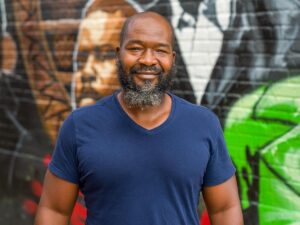
To me, Black Lives Matter is not a movement. It’s my life. As a Black man, this is the first time that I felt happy about white people, being on the front lines with Black people, in solidarity, putting their white privilege on the line, putting their life on the line to listen and understand. This is the first time I felt valued. It is the first time I feel like people are listening and people want to help. It makes me feel real good, because all my life I have been saying these things but people weren’t listening. Now I have a platform to be able to share my story, to be able to help people understand. I have shared my story at the “We are All George” Rally at the Commons Park Downtown, on Saturdays at the Bryant Neighborhood Organization, at the Bloomington March for Justice, and at a healing session where I was interviewed by Channel 9 news. Every time, I see people in tears.
You only know what you know. Sometimes if you’re not affected personally, you are just not going to understand. For whatever reason, George Floyd affected people to their core, and forced people to understand.
Barb Tilson August 2020
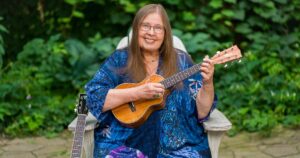 Though these are tumultuous times, I believe we are in a sea change—a deep, pivotal, historical shift in attitudes and actions. In small towns and big cities, anti-racism and BLM are on the signs, the lips, the hearts and minds of people in ways it’s never been before. We’re taking a deep look at what public safety really is, on policing, on healing, on what it takes to get through these hard times together. Mutual aid and grass roots support is deepening and evolving. We are at the epicenter of this watershed moment. I keep thinking about how Meridel would feel looking at what is happening right now. She was always so hopeful. She believed in people’s capacity to survive and change. It feels like one of those moments, where real transformation is possible.
Though these are tumultuous times, I believe we are in a sea change—a deep, pivotal, historical shift in attitudes and actions. In small towns and big cities, anti-racism and BLM are on the signs, the lips, the hearts and minds of people in ways it’s never been before. We’re taking a deep look at what public safety really is, on policing, on healing, on what it takes to get through these hard times together. Mutual aid and grass roots support is deepening and evolving. We are at the epicenter of this watershed moment. I keep thinking about how Meridel would feel looking at what is happening right now. She was always so hopeful. She believed in people’s capacity to survive and change. It feels like one of those moments, where real transformation is possible.


